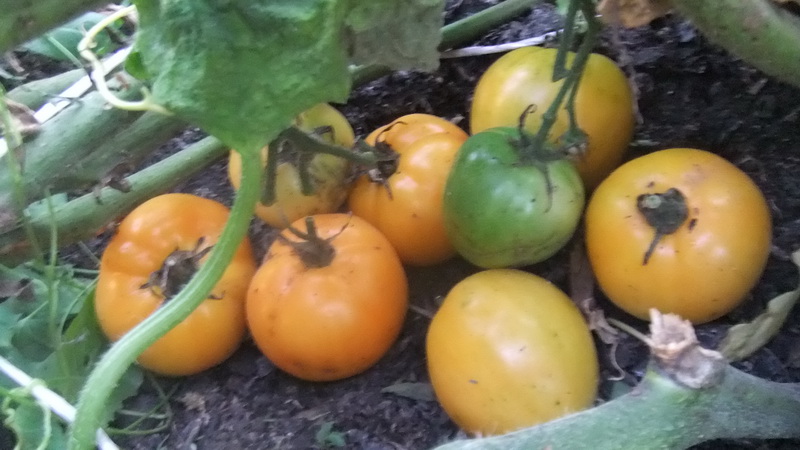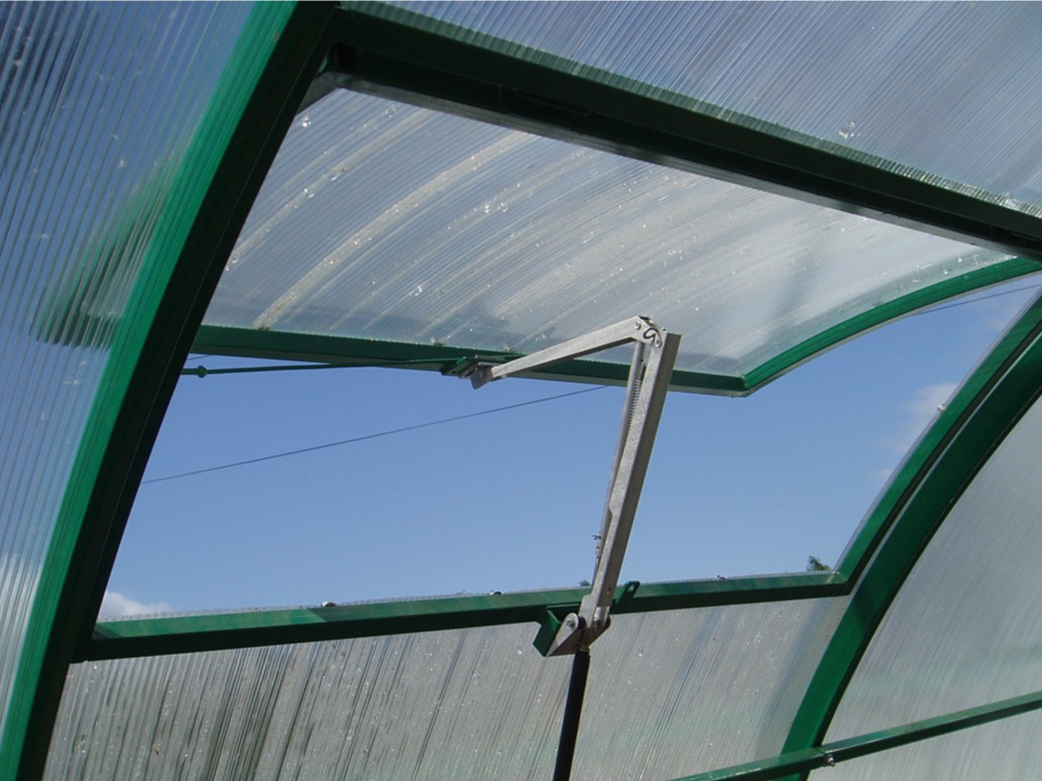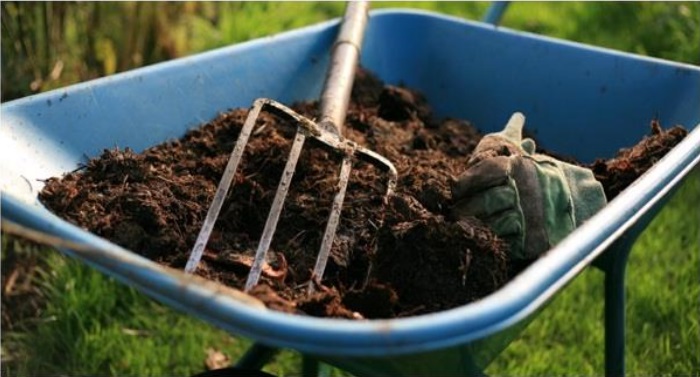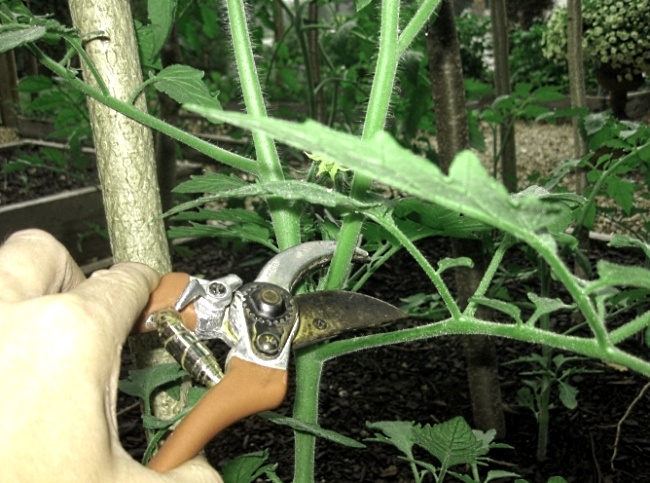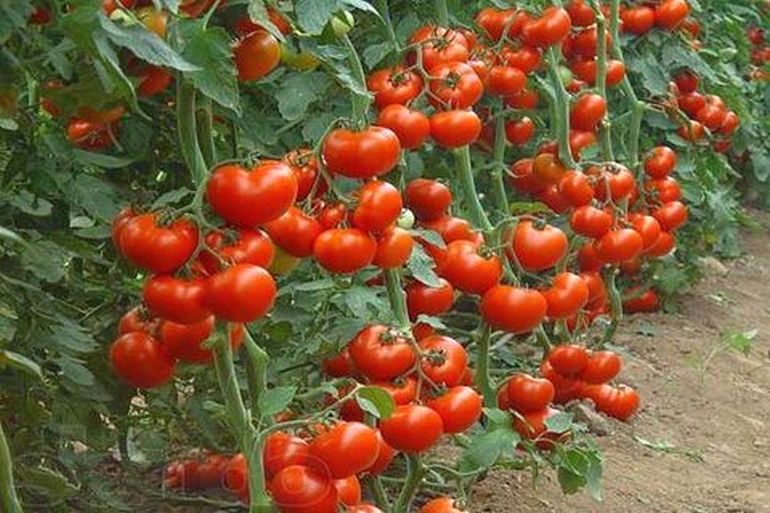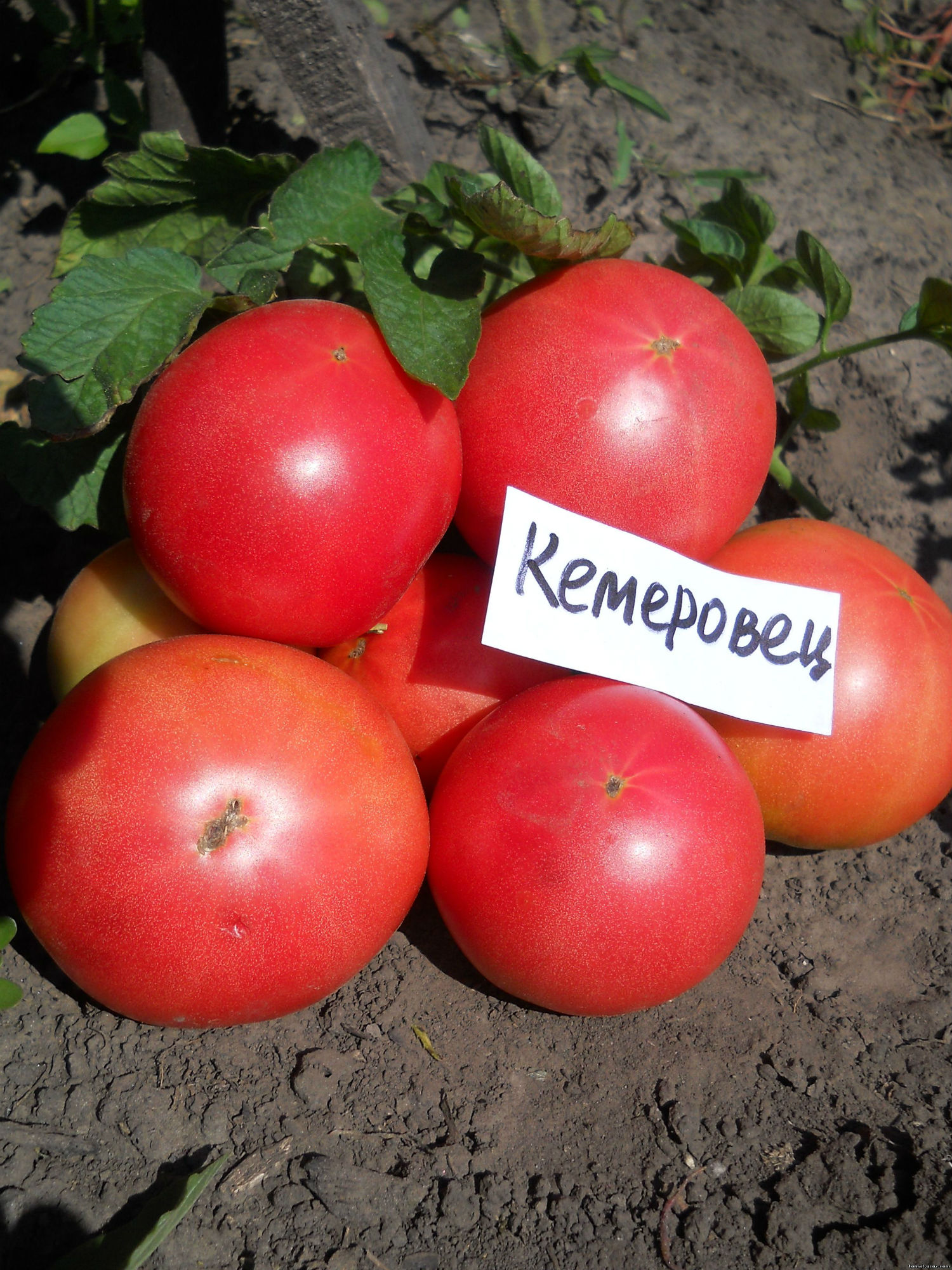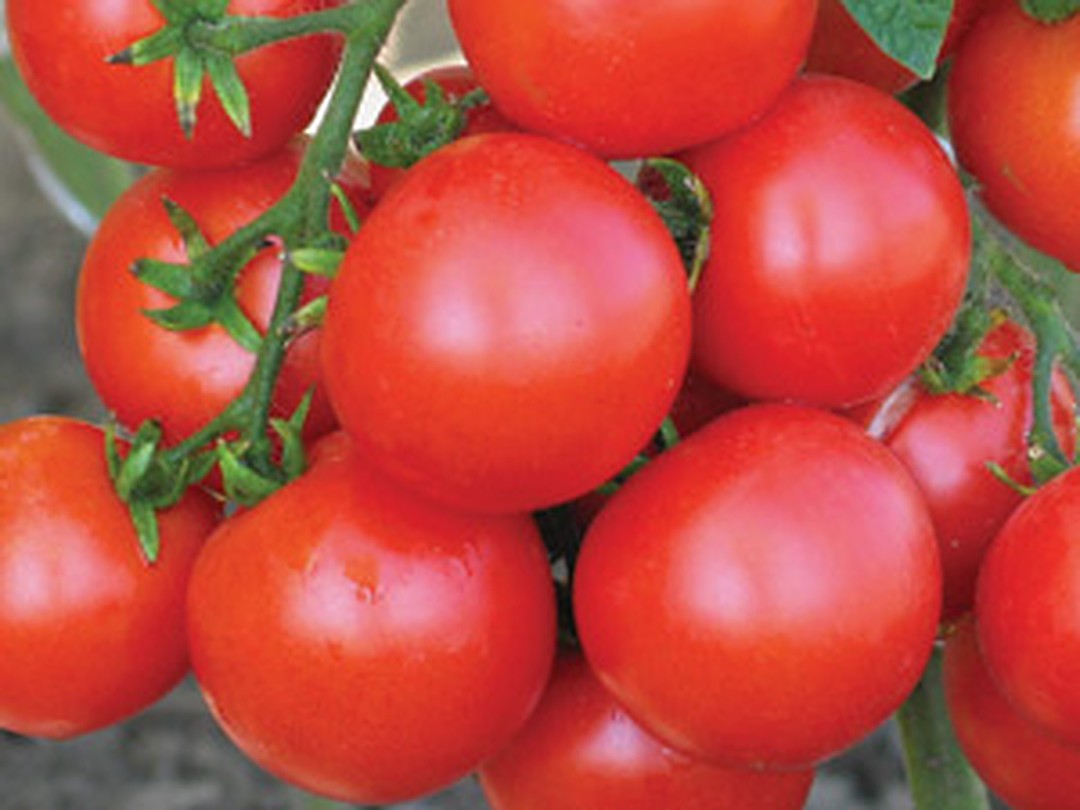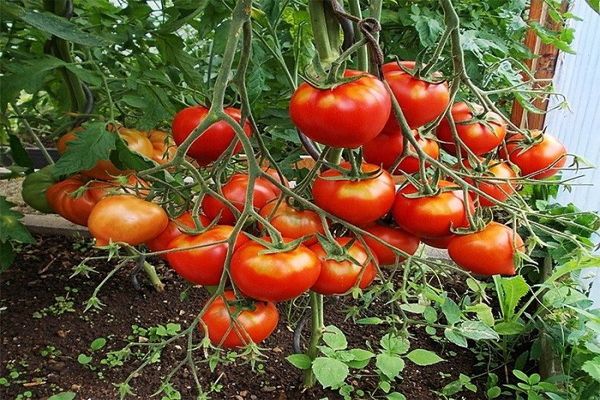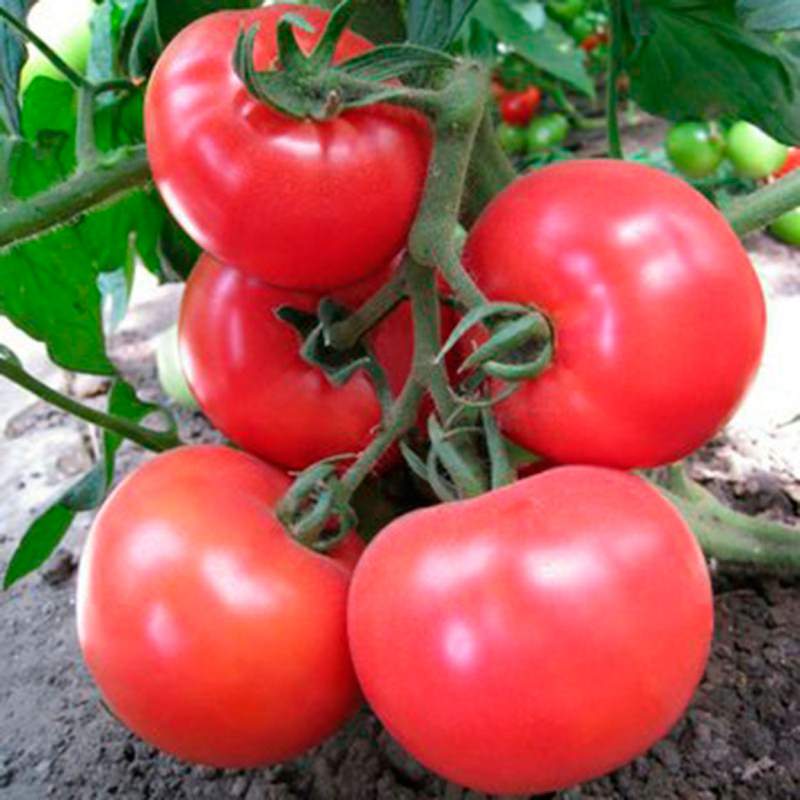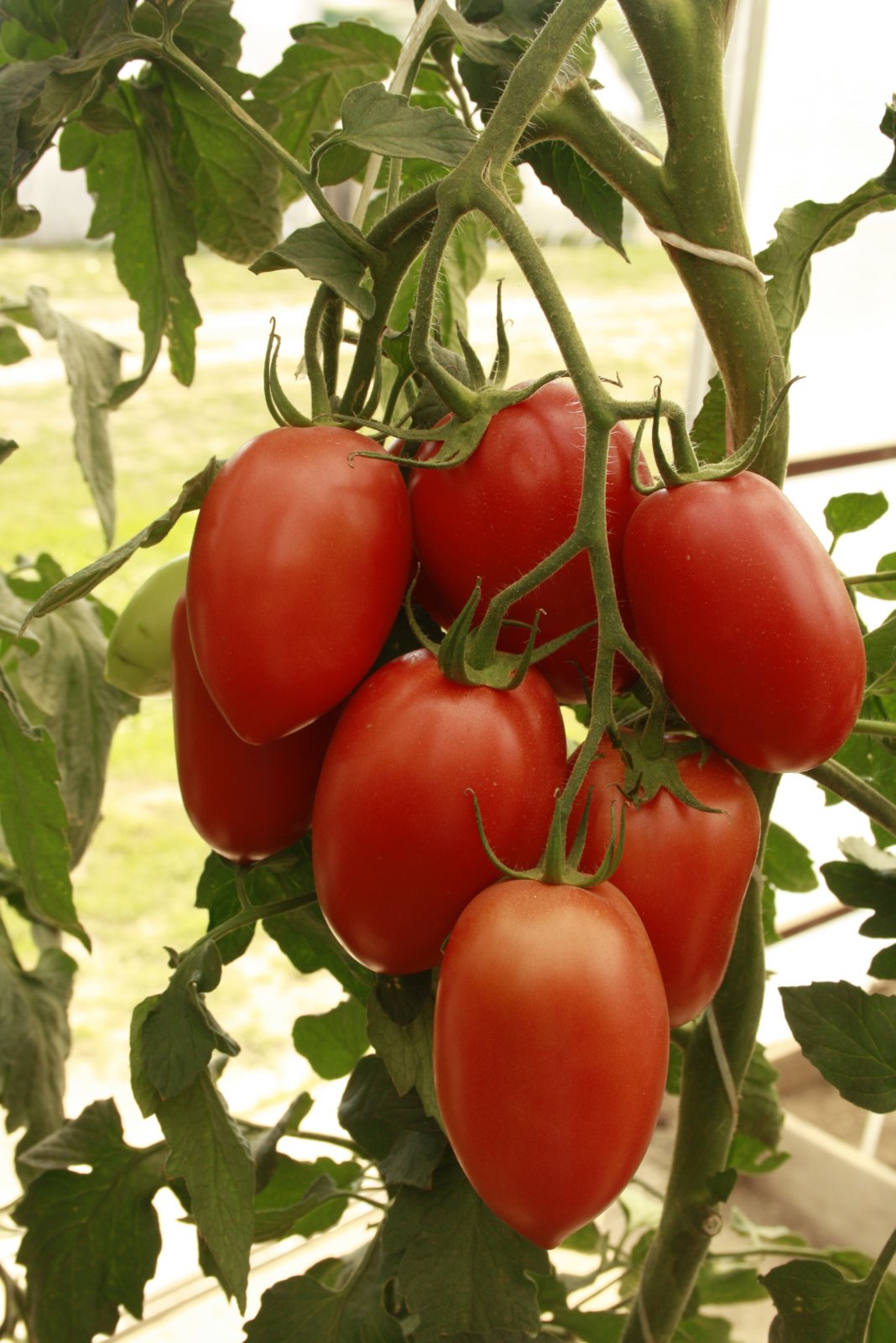Content:
The ultra-early ripening variety Sanka was bred in Russia. The undersized tomato has many fans due to its early yield. Depending on regional conditions, the crop can be harvested from 72-80 days from germination.
Characteristics of the variety
For tomato Sanka, the characteristics and description of the variety indicate that variable weather conditions do not affect the quality and quantity of the crop. Prolonged rains, prolonged cloudiness Sanka tomatoes tolerate staunchly. Also, the tomato is resistant to cold, many diseases, and for ripening it is content with a small amount of light.
Bush
The standard bush rarely grows above half a meter in height. Tomatoes are rarely tied up, only sometimes, in greenhouse conditions, where the height can reach up to a meter.
Having thrown out a 6-7 flower brush, the tomato stops growing.
Description of fruits
Tomato Sanka, very rarely grown on the ground, can yield more than 100 g of fruit. But greenhouse tomatoes boast real giant fruits, weighing 150 g. A flower brush contains about 8 pieces of fruits.
Each tomato is very juicy and fleshy, its color is red, very intense. The ribbing of the fruit is weak. Ripening in an open space, Sanka pleases with a delicate aroma. In tomatoes that are sweetish in taste, you can notice a slight sourness.
Tomatoes Sasha, as the gardeners dubbed their favorite variety, does not have a green part in the region of the stalk. Early ripening allows the fruit to be used on a large scale: salads, pasta, juice, preservation, pickling, as an ingredient in many dishes.
Tomato Sanka golden
Tomato variety Sanka is presented in two types: red tomato and gold.
Golden Sanya is also early maturing. Its characteristics are almost identical with the red counterpart.
Distinctive features of the golden Sanka are the unusual color that its fruits have. Tomatoes have fruits of various sizes, the weight of which varies between 80-150 grams, and on one bush.
When ripe, the fruits of a tomato gradually turn yellow, later turning into orange.
Golden Sanka tomatoes add sophistication to salads. Resistant to cracking, well transported.
Agrotechnics
Growing seedlings
To avoid the laborious process, you can purchase ready-made seedlings. To be sure of the quality, as well as the biological safety of plants, it is better to grow the seedlings yourself.
Seeds and soil
You can improve the germination percentage by the following procedures:
- Soak the seeds in a weak solution of manganese;
- Defective seeds will remain afloat after mixing, they should be removed;
- Once the seeds turn pink, they are washed.
In urban conditions for growing seedlings, you can use specialized soil from a store. For self-preparation of the soil mixture, you will need sand, peat, turf.
Whoever has the opportunity, they also use sawdust for the mixture together with humus and peat.
Planting seeds
The prepared earth is poured into a shallow container, uniform moistening is carried out. High-quality planting material is sown in rows, at a short distance, sprinkled with soil. The maximum depth for Sanka seeds is 2 cm; covering material is placed on top of the container with seeds.
Cultivation of seedlings
When the tomato seeds sprout, the covering material is removed, and the container with the seedlings is placed on the windowsills.
Watering should be done as needed, preventing the soil from drying out.
The appearance of the second leaf signals the need for a pick. The soil for this procedure is pre-fertilized with minerals that must be stocked up in the store.
After another 2 weeks, immediately after watering, the seedlings should be additionally fertilized. To do this, use bird droppings or a special tool.
After picking, the temperature range for seedlings should be kept within 26-27 ° C. Only mature plants can be transferred to a lower room temperature.
For growing in a greenhouse, tomatoes can be immediately dived there, to a permanent place.
Hardening
Gradually, the seedlings are accustomed to the open air, briefly exposing them to the street. After the threat of frost has passed and warm weather has been established, the seedlings can be exhibited for a day.
Transplanting
After 2 months, the tomatoes are quite ready for transplanting. By this time, each seedling should have 7 leaves and at least one brush.
The landing site is prepared in advance. The best fertilizer is a rotted mullein, which is used for digging. Seedlings are planted according to the approximate scheme - 4 pieces per 1 m².
To ensure a good flow of oxygen, sawdust is scattered around the stem of the tomato.
Tomato care
The most important thing that Sanka's tomato needs is watering. Moisten the soil moderately, maintaining uniform moisture. The water is preliminarily defended in containers where it is heated. Cold water damages plants. Do not use sprinkler irrigation to prevent water spilling on foliage and tomatoes.
So that the yield does not suffer, the culture is periodically fertilized with organic matter: dissolved droppings or manure.
When caring for Sanka tomatoes, one should not forget about timely weeding and loosening of the soil.
As indicated in some descriptions, Sanka tomatoes retain their characteristics even in technical ripening. This unique property allows, if necessary, to leave during the fruiting period of the crop.
To do this, the milky fruits are not plucked, but cut with a pruner, leaving a tail. For technical ripening, the fruits are laid out on paper in a room where there is no dampness. In a similar way, you can preserve the harvest for a long time, up to winter.
Garter, pinning
Given the short stature of the bush of this culture, such tedious procedures are not at all necessary.
Separate hands are tied, bent under the weight of the fruit to the ground. This event will prevent the branch from breaking, prevent the fruits from rotting.
For Sanka, picking is carried out to thin out too dense bush. Removing excess shoots, the most important thing is not to damage the growth tip, otherwise the culture will lose its ability to give new shoots and, naturally, fruits.
Also, stepchildren, whose size is less than 5 cm, should not be removed from the trunk, it is still difficult to recognize the main one by a small shoot.
Passing is carried out both with fingers and with a knife or scissors. After finishing the treatment of one plant, it is imperative to disinfect the instrument in order to avoid potential infection of another bush with possible fungi.
All removed parts of the tomatoes are removed immediately.
Tomato Sanka or, as gardeners also call it, Sanya, gives stable yields, despite the changeable weather in the middle lane.
Disease prevention
The ultra-early variety Sanka is declared as resistant to some of the most common diseases. However, an unfavorable climate and insufficiently responsible care can cause the following diseases:
- Alternaria - the fruits themselves are covered with a black bloom, and spots form on the leaves. Fungicides Sectin, Bravo can help with this problem;
- Blackleg - the near-earth part of the culture darkens and begins to dry out. Excessive humidity, poor-quality, poor ventilation of rooms or strong thickening of plants provoke the appearance of a fungus. To eliminate the problem, the culture is watered once with a solution of potassium permanganate;
- Late blight - temperature fluctuations and excessive humidity contribute to the appearance of spots on the entire culture. Fight disease with boric acid or treat with fungicides;
- Fungal diseases - the entire tomato bush is completely covered with black spots. A diseased culture should be treated with medicinal preparations.
For preventive purposes, a thorough deep digging of the site should be carried out in the fall.
Advantages and disadvantages of Sanka tomatoes
The culture gained its popularity due to the short growing season. But this variety of tomatoes has other wonderful advantages:
- Culture can do without pinching, garters;
- An unpretentious variety does not need laborious care;
- The seeds are distinguished by excellent germination rate, almost 94%;
- Sanka withstands temperature drops and many diseases well;
- The tomato crop boasts high yields. Each bush is capable of giving 4 kg of ripe fruits;
- The sociable plant grows comfortably in greenhouses and in the air.
No obvious shortcomings have been identified.
Any of the types of Sanka tomatoes does not belong to hybrids, which allows you to independently harvest seeds.

